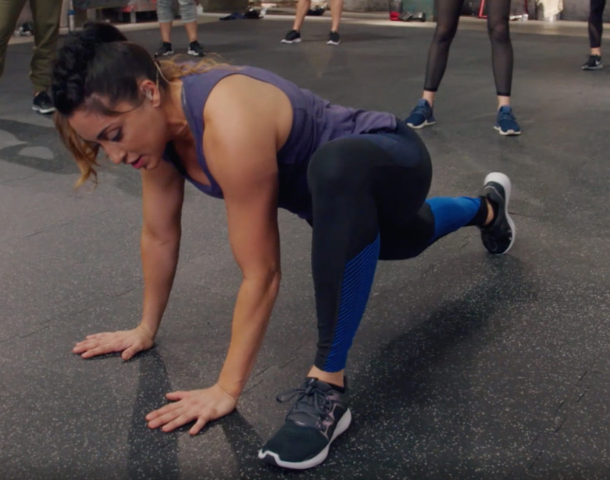
This Dumbbell Move Hits Your Arms, Back, and Chest at the Same Time
Sure, a bench press can target your chest and a lat pulldown will fire up your back, but to hit both spots at once, the dumbbell pullover may be just your ticket.
A weighted exercise that challenges both those areas (plus your shoulders, arms, and rib cage muscles), the pullover is an upper-body smoker that you may just want to slot into your routine time and time again.
Despite its high bang for your buck, the pullover is a move that tends to fall by the wayside. It doesn’t get as much love as other chest or back exercises, so you may not see it very often in workout plans. As a result, you might not be as familiar with it as you are with other upper-body staples like rows or chest presses.
So here’s a quick rundown: The exercise involves lying on your back on the floor (or on a flat weight bench) and gripping one dumbbell above your chest with both hands. With straight arms, you slowly pull the dumbbell over and back behind your head as far as your shoulder mobility allows. Then you reverse the move to return to the starting position. If the pullover sounds simple, it is—but trust us, it really has a lot to offer, no matter your fitness level.
We tapped certified personal trainer and performance coach Keith Hodges, CPT, founder of Mind in Muscle Coaching in Los Angeles to learn all the must-know intel on the dumbbell pullover, including what muscles it works, if it’s more of a chest move or a back move, the mighty benefits, how to incorporate it into your routine, and—most importantly—how to do it properly.
What muscles does the dumbbell pullover work?
Like we mentioned, the pullover serves double duty: It targets your chest muscles (pecs), (especially your pectoralis major, which spans from your upper arms to collarbone to sternum) and your broadest back muscles, called your latissimus dorsi (lats). Additionally, dumbbell pullovers work your triceps (the muscles on the backsides of your upper arms), deltoids (shoulders), and serratus anterior (a muscle along the rib cage that stabilizes your shoulders).
Are pullovers for your chest or back?
This is a long-standing debate in the fitness word, and we’re here to clear it up for you: The answer is both! Pullovers work your chest and your back muscles; so yes, they can be considered a chest exercise as well as a back exercise. As for which area you’ll feel this move working more, well, that all depends on your anatomy, Hodges tells SELF. If your back tends to be tight, then you’ll likely feel the pullover really firing up that area more so than your chest. On the other hand, if your chest and shoulders are tense, then you’ll probably feel the exercise targeting those muscle groups more intensely than your backside, Hodges explains.
What are the benefits of dumbbell pullovers?
Since the pullover targets your chest, back, arm, and shoulder muscles all at once, you can get pretty awesome upper-body muscle activation and strengthening with this exercise. That can make the pullover a nice complement to more lower-body-focused exercises like squats, lunges, and deadlifts.
2023 Healmyselfnow @ All Rights Reserved

